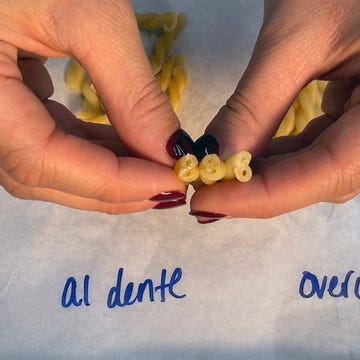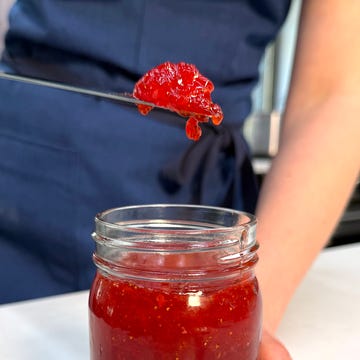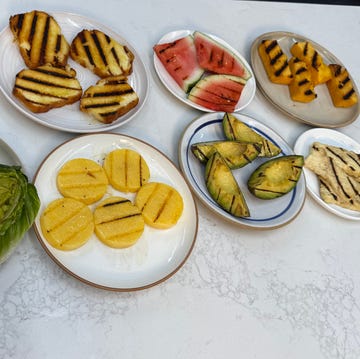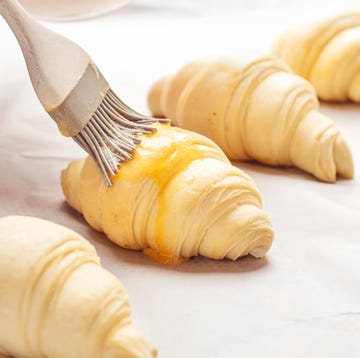There are a lot of things that evoke summer: sweet corn on the cob, grilled hot dogs, and of course, plenty of time at the beach. But nothing says summer quite like watermelon. It's light, refreshing, and plenty hydrating as it's primarily water, which makes it an ideal snack on any hot day. Toss it in a smoothie, mix it in a salad, or eat it by the slice. It also tastes great in a margarita.
What's not to love? The only downside to watermelon is coming home with a bad one. An underripe watermelon can be bland. So, how do you pick the best watermelon?
The first tip for getting the perfect watermelon is to buy it in season. In the U.S., the fruit is harvested in the summer months, although the region might dictate when it's at its peak. For Rebekah Alstede Modery, co-owner and assistant production manager at Alstede Farms in northern New Jersey, watermelon season spans from the beginning of August to mid-September. But in the southern part of the state, she says fresh watermelons can be harvested as early as mid-July.
But this doesn't mean you can only eat watermelon in the summer months. "Even out of season, watermelons can still be delicious!" Lauren Manaker, R.D.N. says. Most watermelons available off-season, she adds, are imported from places where they're grown year-round.
No matter what time of year you're picking a watermelon, here are our golden rules to guide you to a sweet and juicy one.
Check The Stem For Ripeness
A good indicator of ripeness is to take a look at the stem. You'll want to go for a melon that has a shriveled, brown stem, which means it was picked when it was ripe. "White spots anywhere on the melon, or a green stem, typically indicate that it was harvested prior to ripeness," Alstede Modery says. "These melons should be avoided when shopping!"
Look For A Dull Melon
A shiny watermelon might be more photogenic, but a dull appearance is actually better. A watermelon that's too shiny is underripe.
Look For A Yellow Field Spot
One of the most well-known clues of a perfect melon is a yellow spot on its belly. This is often referred to as the "field" or "ground" spot, as it's the portion of the melon that was lying on the ground when growing. Manaker says this spot should be "buttery yellow."
"If it's too orange, the watermelon is overripe and mushy. If it's too white, it's underripe and will taste bland, like cucumber."
Check For Russeting & Webbing
"Avoid watermelons with visible damage like gashes, bruises, or punctures, as these can affect the quality inside," Manaker says. But what are considered good signs are russeting and webbing. Dry brown spots are russeting, and ones that look more web-like are called webbing. This pattern is formed when bees pollinate the flowers, which in turn pollinate the fruit. "Larger webbing typically means it is a sweeter watermelon," Alstede Modery says.
Check The Weight
You want to pick a melon that feels heavy. "Watermelons are 92% water, so a heavier one means it's juicy," Manaker says. A watermelon that feels too light, on the other hand, might be a little too ripe. It's a sign the watermelon has started to dry out. A dry watermelon? No thank you.
Slap It Gently
Yes, it's another common tip you're probably heard, and it has some truth to it. What you want to pay attention to is the sound. If it sounds too dull or muted, the watermelon might not be as juicy. A hollow, crisp sound is what you want.














